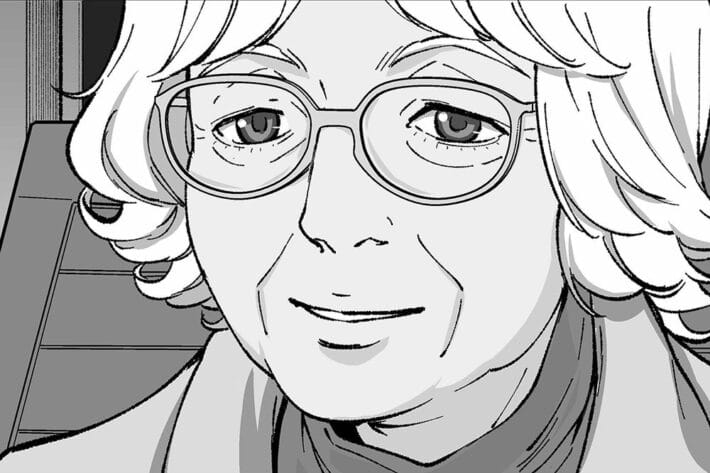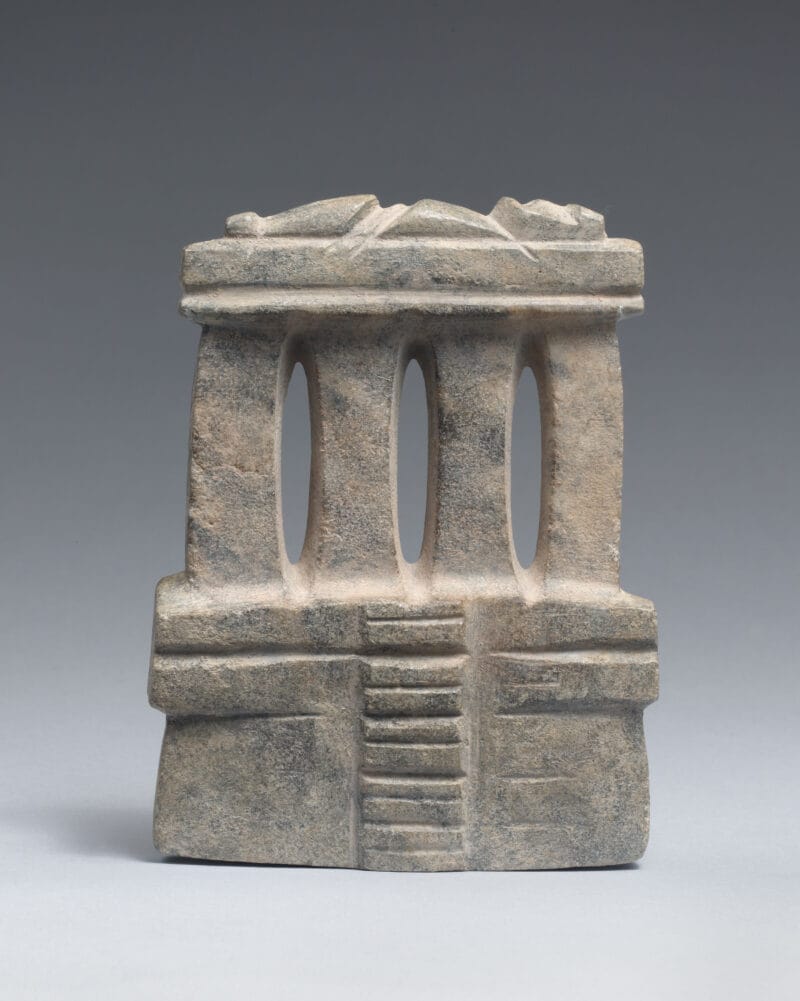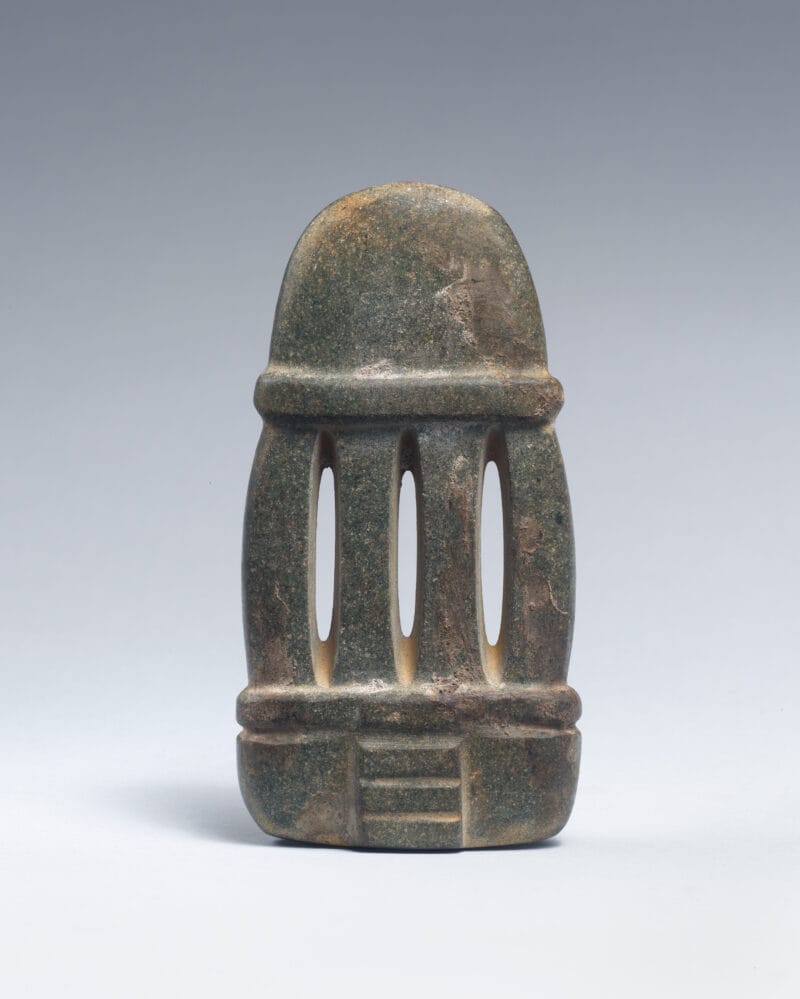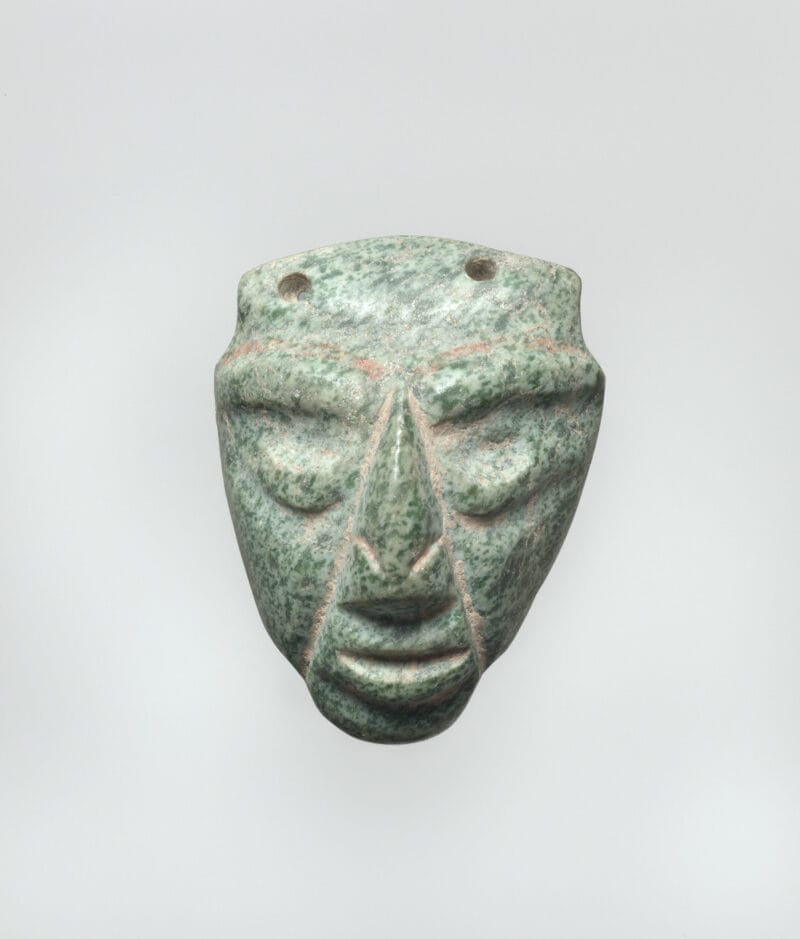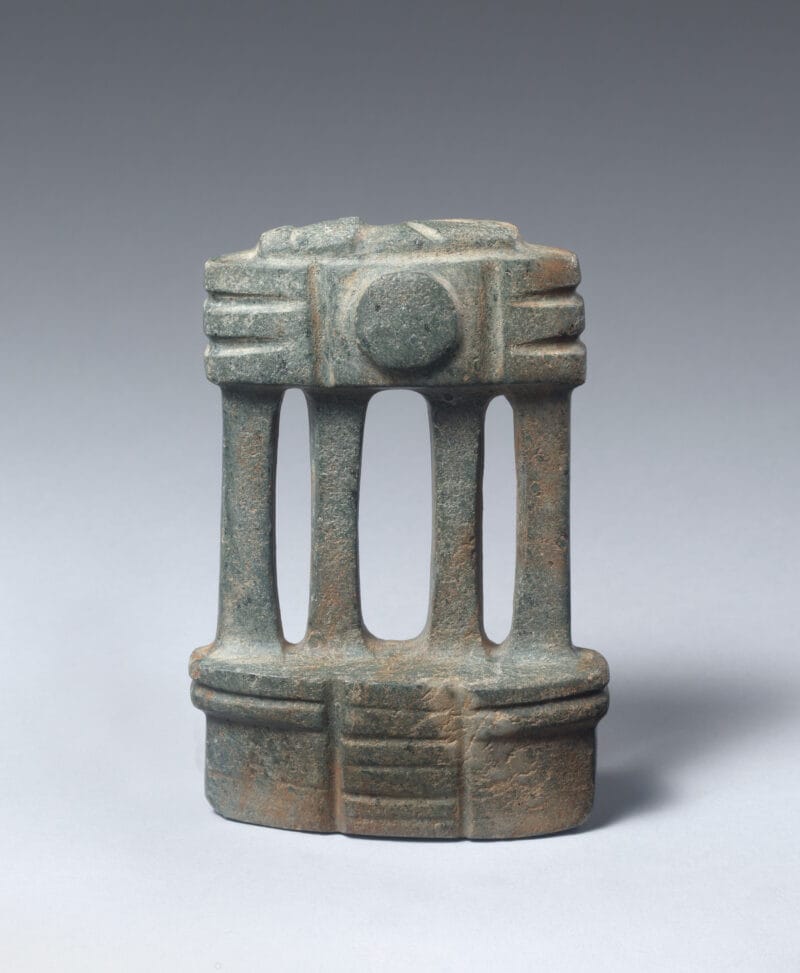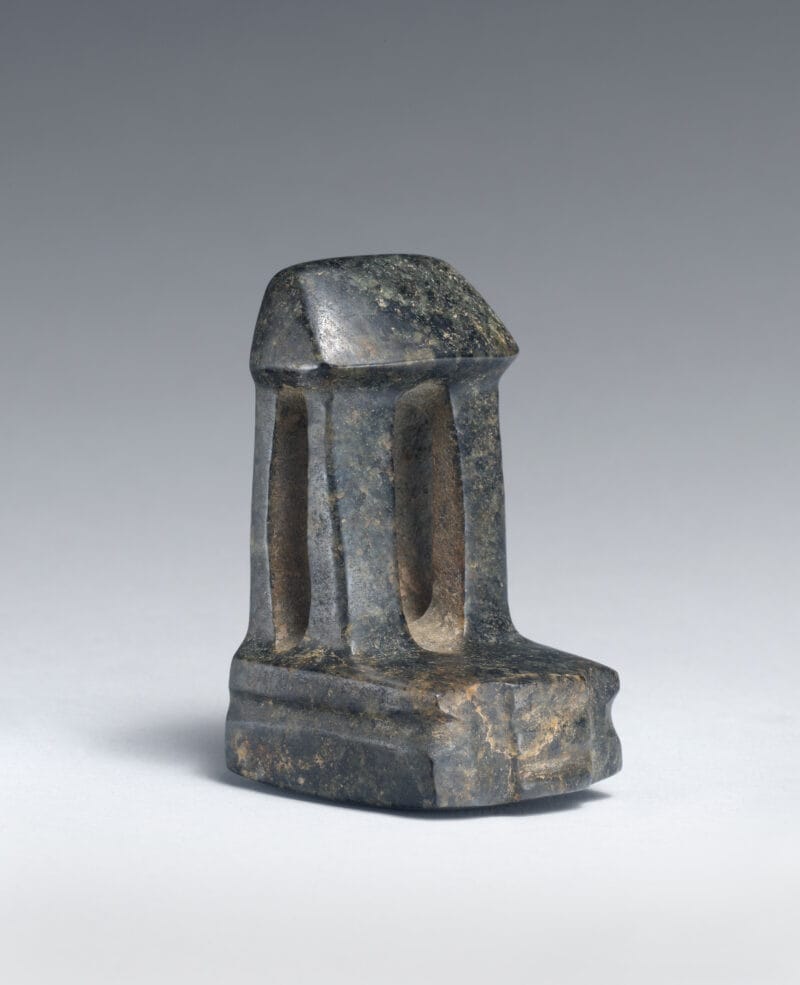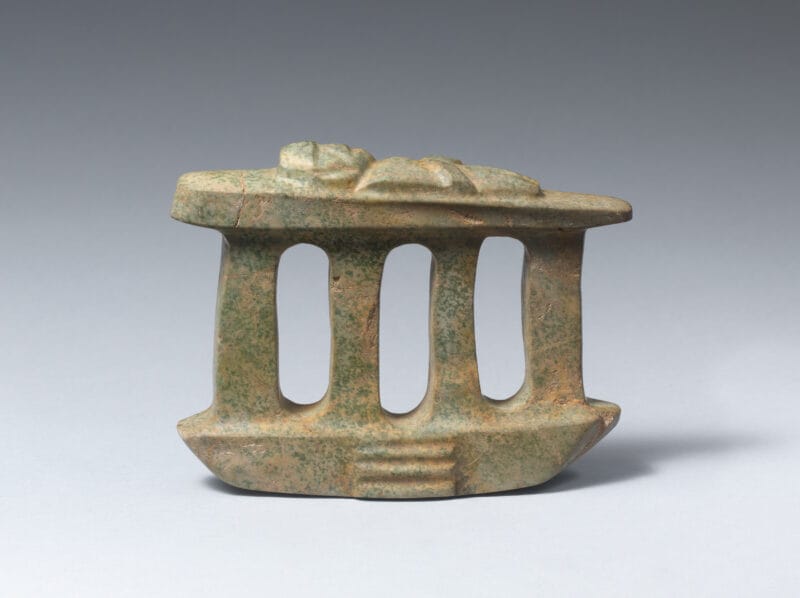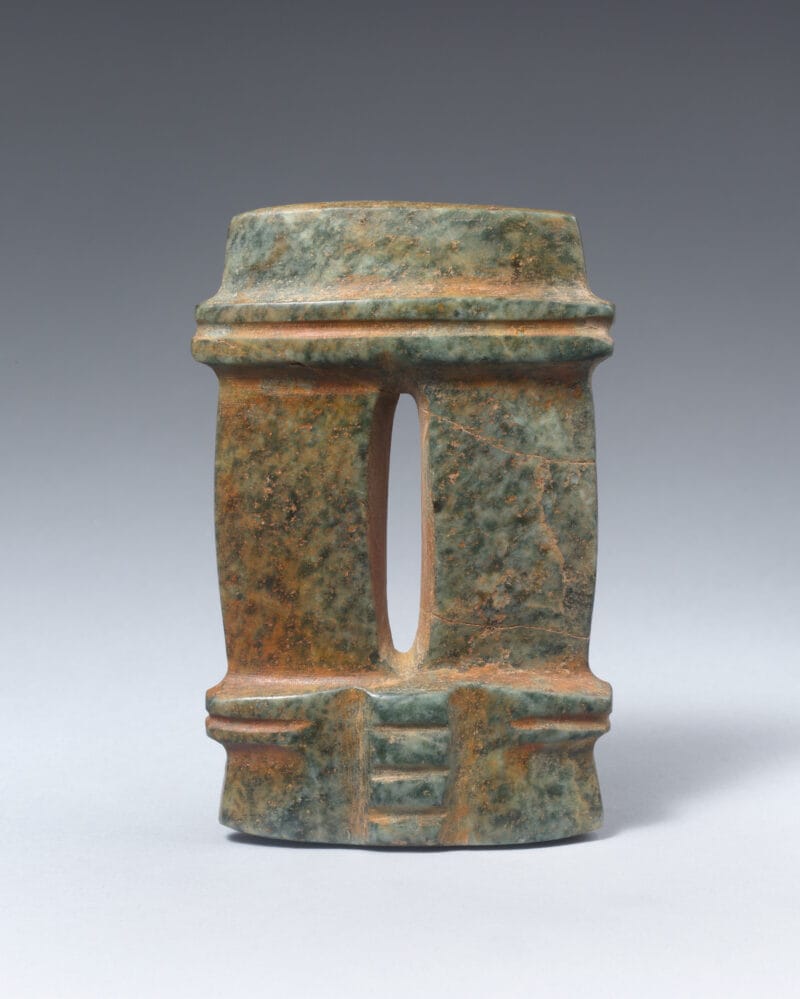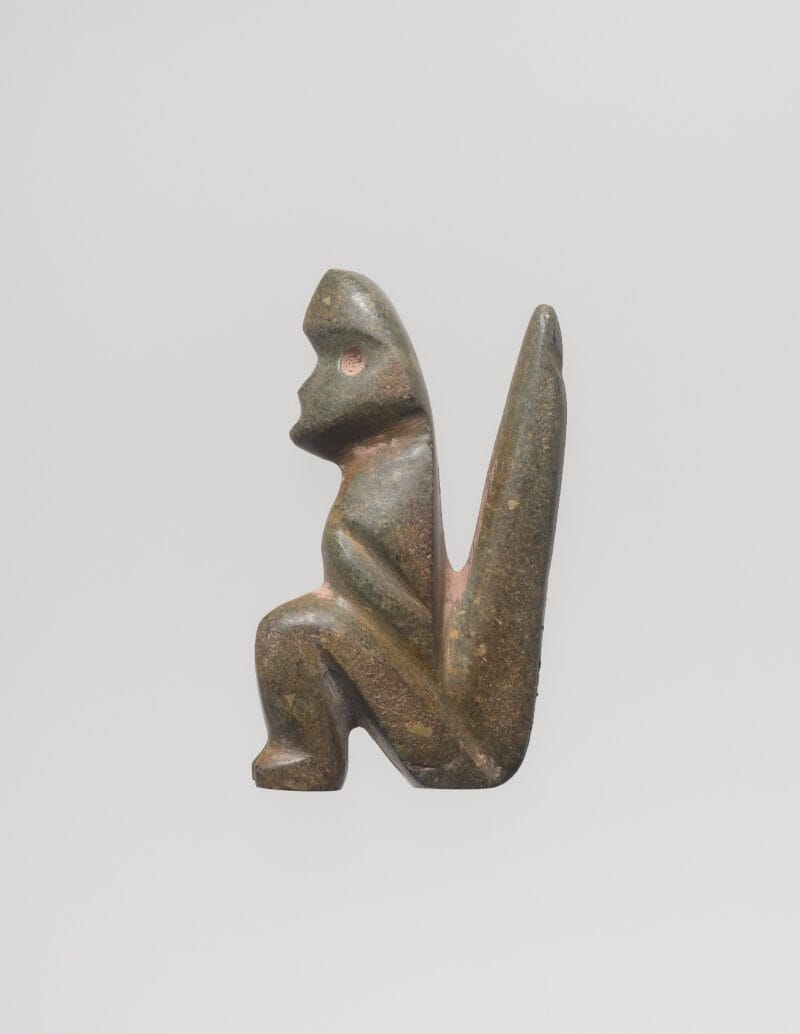
About the Object
This model’s particular features are indicative of Mezcala temple or architectural andesite models, which often have more massive bodies and wider and rounder openings. Unlike other Mezcala temples or models that commonly fit within the two-dimensional scope, this model’s unique features likely convey special attention to realistic structures. It consists of two platforms indicated by parallel cuts in the stone, topped by a three-dimensional four-column structure, capped by two more repeating platforms with parallel cuts and capped by a final platform marked by a cut around the entirety of the stone creation.
Additional Information
A great deal remains unknown about Mezcala-Chontal traditions originating in what is now the Mexican state of Guerrero due to a lack of archaeological excavation and analysis. However, recent scholarship and archaeological excavations are helping to piece together more knowledge about these remarkable traditions and their context within the broader Mesoamerican world. For example, Mezcala architectural models or temples of this period usually accompanied burials and remains of influential people, leading some scholars to believe these may have symbolized the expectations or the foundations for dwelling in peace and happiness after death.
Private Collection, CA, 1964-1996;
Private Collection, CA, 1996;
[Throckmorton Fine Art, New York, NY];
New York, NY. Metropolitan Museum of Art. Design for Eternity: Architectural Models from the Ancient Americas, October 26, 2015-September 18, 2016.
Related Objects
You may also be interested in
Architect James Leng designs birdhouse for Vilcek Foundation Rooftop
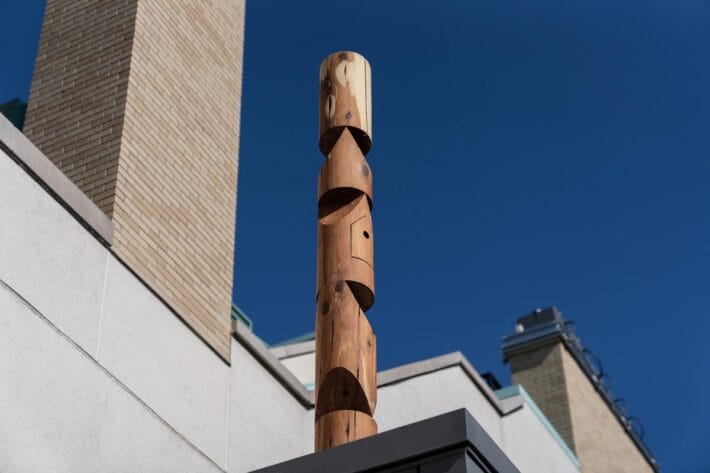
Vilcek Foundation receives 2021 AIA Interior Architecture Award
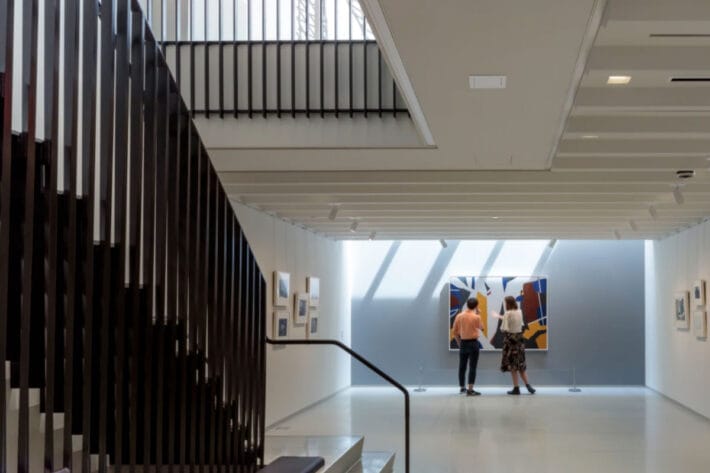
Postmodern pioneer: Manga biography celebrates Denise Scott Brown
